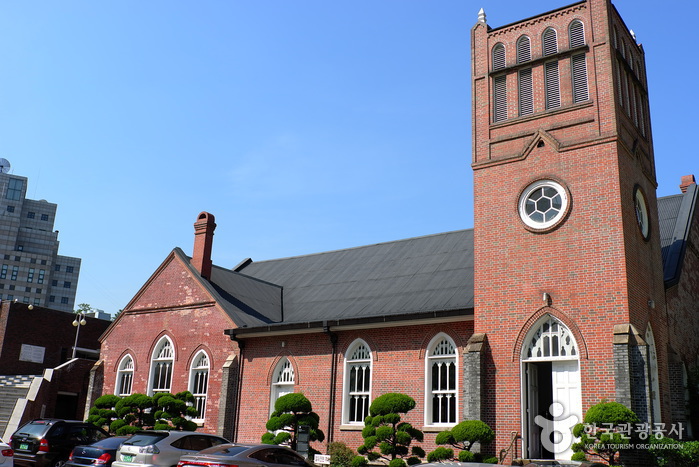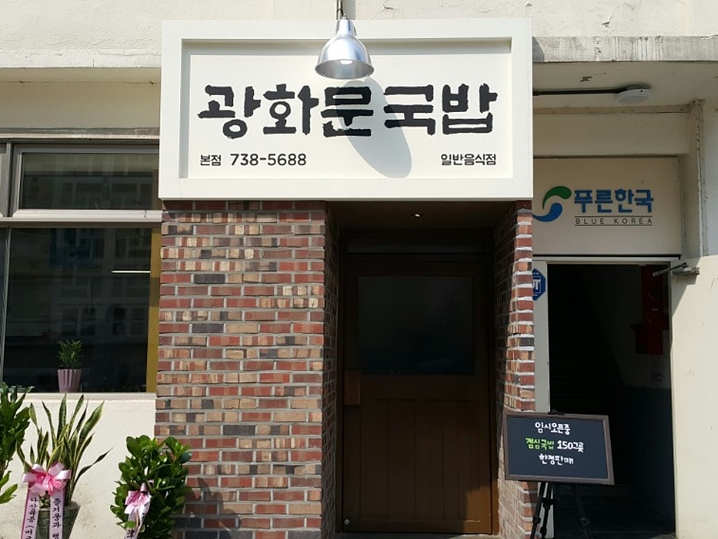Beanpole - Hyundai Cheonho Branch [Tax Refund Shop] (빈폴 현대 천호점)
7.4Km 2024-04-22
1005, Cheonho-daero, Gangdong-gu, Seoul
-
8 Seconds - Hyundai Cheonho Branch [Tax Refund Shop] (에잇세컨즈 현대 천호점)
7.4Km 2024-04-23
1005, Cheonho-daero, Gangdong-gu, Seoul
-
Galaxy - Hyundai Cheonho Branch [Tax Refund Shop] (갤럭시 현대 천호점)
7.4Km 2024-04-23
1005, Cheonho-daero, Gangdong-gu, Seoul
-
Tod’S - Hyundai Cheonho Branch [Tax Refund Shop] (토즈 현대 천호점)
7.4Km 2024-04-18
1005, Cheonho-daero, Gangdong-gu, Seoul
-
Hyundai Department Store - Cheonho Branch [Tax Refund Shop] (현대백화점 천호)
7.4Km 2024-04-22
1005, Cheonho-daero, Gangdong-gu, Seoul
-
Chungdong First Methodist Church (서울 정동교회)
7.4Km 2020-06-25
46, Jeongdong-gil, Jung-gu, Seoul
+82-2-753-0001
Chungdong Church, having being completed in 1897, was the first Christian church that was built after the spread of Protestantism in Korea. The church was founded in 1887 as a small worship house under the name Bethel by Henry Gerhard Appenzeller, an American missionary. As the number of followers increased, the building underwent construction and officially became a church in 1895. Chungdong Church is the only remaining church building from the 19th century. The church was expanded once more in 1926, changing its from a cross-shaped building to a square one. The expansion was made by adding walls using bricks as not to damage the original building structure. The architecture was built in a simplified version of an American gothic house with arched window frames.
Persian Palace (페르시안궁전)
7.5Km 2024-03-18
9 Sungkyunkwan-ro 6-gil, Jongno-gu, Seoul
+82-2-763-6050
Persian Palace is a restaurant specializing in Indian cuisine and Iranian kebabs, run by an Iranian chef. They offer set menus such as lamb curry, spinach curry, and butter chicken, which can be enjoyed with tandoori nan. The spiciness of the curry can be adjusted, and they also have vegan options available. For dessert, they serve Persian homemade desserts like mast (Persian yogurt) and saffron ice cream. They provide halal food and prayer rooms for Muslims.
Homeplus Express - Myeongnyun Branch (No. 2) [Tax Refund Shop] (홈플러스익스프레스 명륜2호)
7.5Km 2024-04-18
5, Hyehwa-ro 3-gil, Jongno-gu, Seoul
-
Gwanghwamun Gukbap (광화문국밥)
7.5Km 2024-06-19
53 Sejong-daero 21-gil, Jung-gu, Seoul
Gwanghwamun Gukbap is a dwaeji gukbap (pork and rice soup) restaurant operated by Chef Park Chanil. Its distinctive feature lies in using only black pork loin and shoulder to enhance the flavor. The signature dish is the dwaeji gukbap, which boasts a mild, clean, and deep flavor. In addition to that, they also offer dwaeji suyuk (boiled pork slices) and pisundae (sundae with pork blood). Known for its authentic taste of rice soup and rich broth, it's a popular destination for many.
Seoul Museum of Craft Art (SeMoCA) (서울공예박물관)
7.5Km 2025-06-19
4 Yulgok-ro 3-gil, Jongno-gu, Seoul
The Seoul Museum of Craft Art (SeMoCA), the first public museum of craft art in Korea, opened its doors in Anguk-dong, Jongno-gu, in July 2021 after renovating five buildings of the former Pungmoon Girls’ High School. SeMoCA studies and shares not only works, but also information, records, people, and environment related to craft art with the goal of becoming a dynamic platform for experiencing the technical, practical, artistic, and cultural values of craft.
SeMoCA holds a collection that comprises various crafts and craft materials covering multiple fields and eras from the traditional to the present. SeMoCA also holds exhibitions that feature the history of craft from traditional to contemporary art as well as local and children’s crafts, along with programs that utilize the museum’s craft installations, craft archives, craft library, and craft resource management system.
The site of the museum has deep historical roots as it is also the Andong Secondary Palace Site, where a detached palace was constructed as a royal residence for King Sejong’s son Prince Yeongeung, and served as a venue for royal celebrations, such as the wedding of King Sunjong. The site is also at the center of Jongno-gu, where Joseon-era master artisans (“gyeonggongjang”) of the royal palace produced and delivered craft works.

![Hyundai Department Store - Cheonho Branch [Tax Refund Shop] (현대백화점 천호)](http://tong.visitkorea.or.kr/cms/resource/98/2887998_image2_1.jpg)

![Homeplus Express - Myeongnyun Branch (No. 2) [Tax Refund Shop] (홈플러스익스프레스 명륜2호)](http://tong.visitkorea.or.kr/cms/resource/80/2878180_image2_1.jpg)

 English
English
 한국어
한국어 日本語
日本語 中文(简体)
中文(简体) Deutsch
Deutsch Français
Français Español
Español Русский
Русский